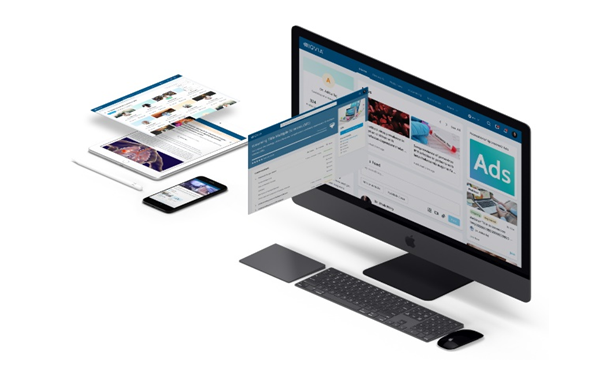The COVID-19 pandemic is impacting societies and economies across the globe, and creating unprecedented challenges for the healthcare industry. IQVIA is proud to be part of the fight against the disease, helping governments, healthcare workers, researchers, clinics, and pharmaceuticals better understand and address the virus.
Around the world communities are taking drastic measures to try to stop the spread of this novel coronavirus through social distancing, curfews and lockdowns. Technology, therefore, has become a critical tool for governments, international health organizations, and populations to enhance our collective response to the crisis, and publish and receive reliable disease-related information, symptom guides, medical orientation and training, and more.
Beyond just addressing COVID-19, technology is also at the center of our ability and commitment to ensuring that healthcare continues to move forward. Patients must continue to be seen, diagnosed and treated. Doctors must continue to receive information on treatments, innovations, and new ideas.
Now more than ever, technology is both an immediate solution and a longer-term platform for human health.
Technology, Health, and COVID-19
In several countries, health tech companies have designed Artificial Intelligence (AI)-powered chatbots1, based on local governments and ministries of health guidelines, that provide the public with interactive information, answer FAQs and support COVID-19 symptom screenings and potential coronavirus case detection. AI has also learned to track the spread of the coronavirus by analyzing social media platforms, news reports and government publications, providing those fighting the virus with critical and accurate real-time updates.
Telemedicine has also been quickly adopted since the pandemic struck. E-consultation volumes have increased significantly, and telehealth platforms are being used to enable safe communication between isolated patients and their families. In fact, doctors are now being trained on conducting e-visits with patients, suggesting that this new paradigm can take hold in the long-term beyond the pandemic, and disrupt traditional doctor-patient interactions.
The Need for Holistic, Scalable, and Connected Digital Solutions
The current crisis has brought in many innovative use cases for existing technology. In Tunisia, to enforce the curfew and prevent the spread of the coronavirus, local authorities have deployed robots to check their awareness of lockdown rules and the reason for their movements. Other African countries, such as Kenya, have turned to mobile money as a public tool; A major telecom operator has joined forces with the country's central bank to make all person-to-person transactions of less than 1,000 Kenyan Schillings (10 USD) free for 3 months to reduce the physical money exchange in response to the pandemic.
As we look to how technology is helping in this current crisis, we would be remiss not to focus on creating more sustainable, scalable solutions that bring together all the players in the ecosystem. COVID-19 is compelling patients and healthcare providers to keep a safe physical distance, creating a challenge for quality care delivery. Healthcare must remain effective while being remote in crises such as the current pandemic. Doctors and health workers need to be able to monitor their patients remotely, provide at-home services when necessary and possible, and provide consultation without having to be physically present with the patient.
One tangible example of how technology is changing the face of healthcare through this pandemic can be found in Italy, one of the countries most affected by COVID-19. A Brescia-based hospital with 250 patients in intensive care ran out of valves that connect patients to breathing machines. A local 3D-printing2 company raced to the hospital, analyzed the valves, and, within three hours, delivered a prototype, tested (with positive results), and printed 100 valves in 24 hours, saving many lives. The 3D-printed valves costed no more than 1€ each, proving that innovation and affordability can sometimes go hand in hand.
In Morocco, several 3D-Printer companies3 are contributing to the collective effort by making, for free, hundreds of 3D-protective visors, which will be used to protect doctors working at the front during this period of crisis.
Certainly the COVID-19 pandemic has exposed gaps in medical infrastructure and resources of many countries, underscoring the need for more proactive adoption of technology as a critical tool in supporting and ensuring the availability and effectiveness of resources and logistics for any health system. As a community, we need to join together to build digital health solutions that are effective and efficient at handling needs through the care cycle and beyond. A new paradigm that provides patients with the attention and monitoring they need, enables the safe delivery of treatment, and provides the entire ecosystem with the ability to communicate and connect whenever they need to – in this crisis and beyond.
For more details on healthcare technologies and digital trends in Africa, please contact us.
1 Read more on Virtual Patient Communities: https://www.iqvia.com/blogs/2020/04/virtual-patient-communities-a-response-to-covid-19-and-other-infectious-diseases
2 https://www.medicaldevice-network.com/news/3d-printed-valves-covid-19-italy/




















